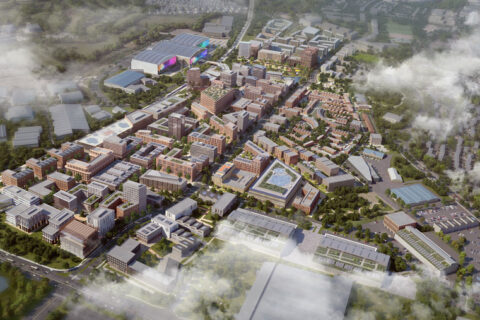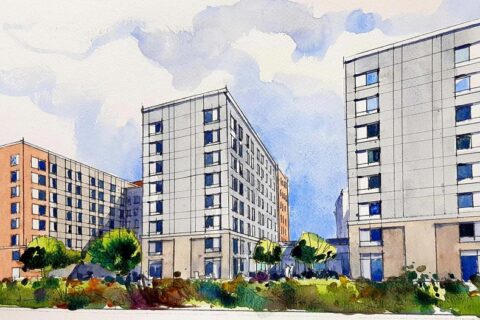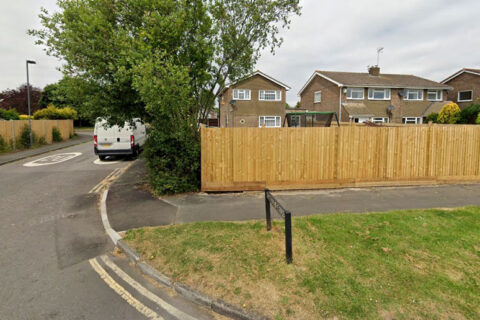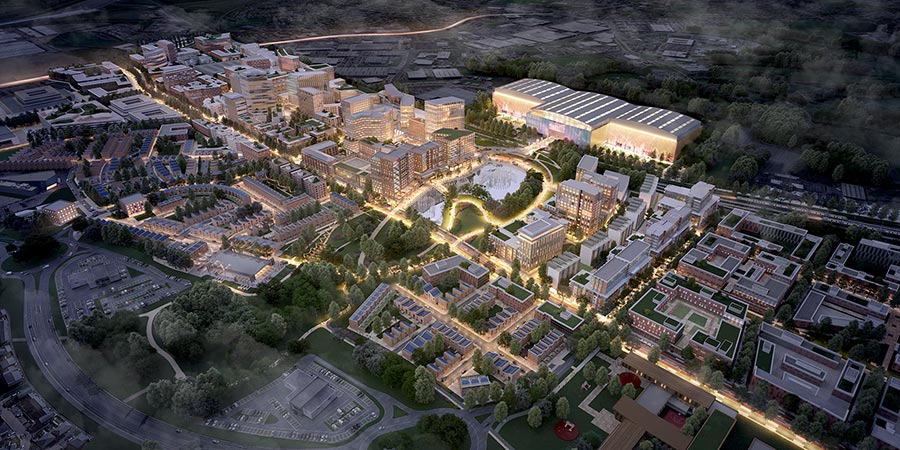
A new masterplan submitted by YTL, the firm behind the redevelopment of the former Filton Airfield, attempts to show how the number of new homes being built on the site could be increased from the currently approved 2,675 to as many as 6,500.
The uplift would be achieved by increasing the proportion of apartment blocks within the mix of property types to be built, with heights up to 18 storeys (and for two buildings up to 30 storeys).
By linking the increase in housing to phased improvements in transport infrastructure (see facing page), YTL hopes to convince South Gloucestershire Council (SGC) planning officers that it would “make best use of the largest area of brownfield land in the south west”. Failing to maximise the potential of such brownfield land will lead to “more development on green fields in unsustainable out-of-town locations”, it claims.
Since the original planning consent for 2,675 homes was granted in 2018, YTL has also had its plans for a 17,000-capacity arena complex in the former Brabazon hangars approved.
However, it says that since then, “the housing crisis and climate emergency have only got more acute”, and there is also a greater imperative to ‘level-up’ every region of the UK following the Covid-19 pandemic.
The firm says that a first step up to 3,675 homes could be achieved by transferring a quota of 1,000 homes earmarked in SGC’s Core Strategy on land at Patchway Trading Estate, as that project “is no longer expected to go ahead”.
This would not increase the total number of homes being built within the Cribbs Patchway New Neighbourhood (set in the Core Strategy at 5,700) and, it is claimed, would not require any additional transport infrastructure beyond that already approved, which includes a new railway station on the former airfield and bus services on the Cribbs Patchway MetroBus Extension.
YTL says its new phased masterplan will have the potential to deliver over 1,000 new affordable homes within a ‘15-minute neighbourhood’, where every daily need or essential service is less than a 15 minute walk or bike ride away.
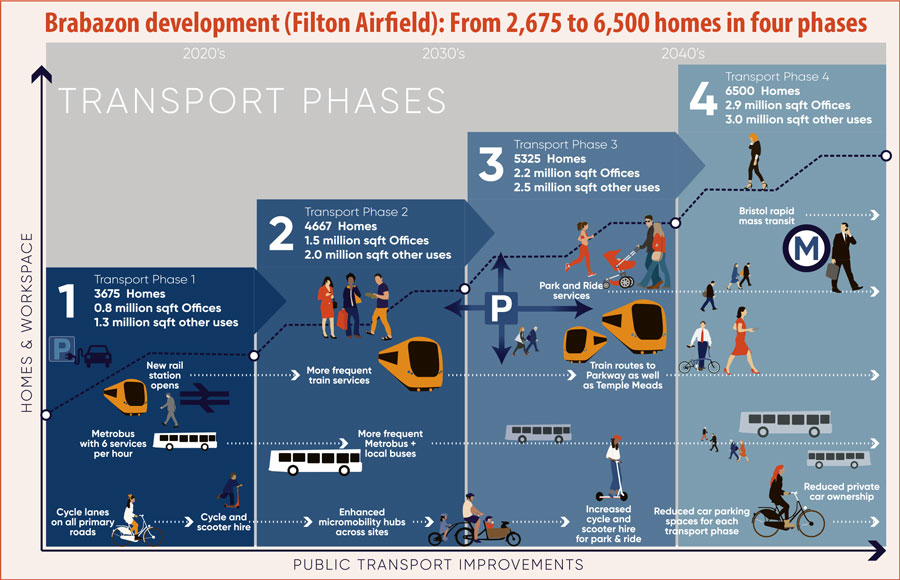
Seb Loyn, planning & development director for YTL Developments, said:
“Bristol and South Gloucestershire face a housing crisis and need to build more than 100,000 new homes within the next two decades.”
“But it is not enough to just build homes: if we are to tackle the climate crisis, we need to make sure we build more sustainable homes in the right places. This means on brownfield land along existing transport corridors like at Brabazon, where public transport connections and active travel routes provide a genuine alternative to car-dependent lifestyles.”
“Brabazon sits on major public transport corridors, including the M1 MetroBus route and Concorde Way cycle path. A train service from the new rail station being built at Brabazon will connect to Bristol Temple Meads in less than 15 minutes when operational in 2023.”
“Nowhere in the West of England is better placed to build the new homes, offices, schools and community facilities we need, and to do so in a way that is environmentally and economically sustainable.”
“Crucially, additional homes and offices will only be built as and when improved public transport connections come forward. The proposals we have submitted have a series of checks and balance in place to ensure that increased density can only be delivered at the same time as the additional public transport needed to support it.”
Editor’s note: The planning application for the new masterplan is yet to be validated by South Gloucestershire Council, however, an earlier ‘scoping opinion’ application (P21/033/SCO) is available to view on the council’s planning portal.
This article originally appeared in the May 2022 issue of the Bradley Stoke Journal magazine (on pages 10 & 11).


